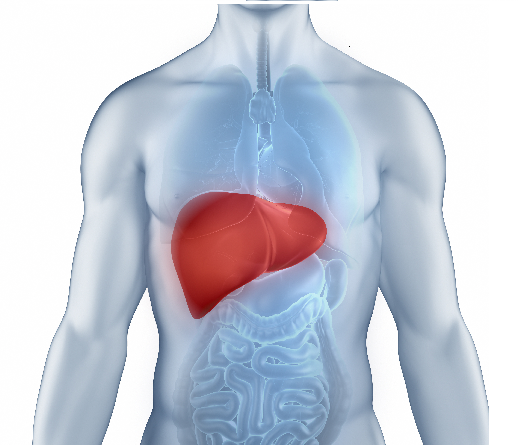Juvenile Rheumatoid Arthritis
Juvenile Idiopathic Arthritis (JIA), previously termed Juvenile Rheumatoid Arthritis, is a chronic inflammatory condition impacting children under 16. It is an autoimmune disorder in which the body’s immune system mistakenly attacks its tissues, leading to inflammation, primarily in the joints. This condition can result in discomfort and limit daily activities.
What Causes of Juvenile Rheumatoid Arthritis?
Common Juvenile Rheumatoid Arthritis causes include:
1. Genetic Factors: Genetics are fundamental in JIA development, with family history and specific markers like HLA-B27 increasing risk, though not guaranteeing the disease.
2. Environmental Triggers: Viral infections and environmental factors like toxins and pollutants can trigger JIA in genetically predisposed children, leading to immune system dysregulation.
3. Immunological Factors: JIA occurs when the immune system mistakenly attacks joint tissues, causing inflammation. This is caused by a combination of genetic and environmental factors with research ongoing to determine the exact factors.
What are the Juvenile Rheumatoid Arthritis Symptoms?
The symptoms of JIA can vary widely depending on the type and severity of the condition. Some of them include:
- Joints may appear swollen and tender to the touch.
- JIA can cause recurrent fevers and a characteristic salmon-coloured rash.
- Children may limp or have difficulty using a limb due to joint pain or stiffness.
- Chronic inflammation can lead to fatigue and a decreased appetite, affecting overall health and growth.
- Affected joints may be painful, stiff, and difficult to move, especially in the morning or after periods of inactivity, which are common signs of juvenile arthritis.
- Uveitis, an eye inflammation, can occur in some types of JIA and requires regular monitoring by an ophthalmologist.
What are the Types of Juvenile Rheumatoid Arthritis?
JIA is categorised into several distinct types:
- Oligoarticular JIA: This type affects four or fewer joints within the first six months of onset. It is the most common form of JIA and often impacts larger joints such as the knees. Children with oligoarticular JIA are at increased risk of developing uveitis, an inflammation of the eye.
- Polyarticular JIA: In this type, five or more joints are affected in the first six months. Polyarticular JIA can involve both large and small joints and may be symmetrical, affecting the same joints on both sides of the body. It can resemble adult rheumatoid arthritis.
- Systemic JIA: Also known as Still’s disease, systemic JIA affects the entire body, not just the joints. Children with systemic JIA often experience high fevers, a salmon-coloured rash, and inflammation of internal organs such as the heart and liver, in addition to joint pain.
- Enthesitis: Related JIA: This type involves inflammation where tendons and ligaments attach to bones (entheses). It often affects the lower limbs and is sometimes associated with inflammation of the eyes. It is more common in boys and can be linked to a genetic marker called HLA-B27.
- Psoriatic JIA: Children with this type of JIA have arthritis and psoriasis, a skin condition. Psoriatic JIA can affect any number of joints and may cause dactylitis (swelling of the fingers and toes) and nail changes.
- Undifferentiated JIA: This category represents a diverse group of conditions with varying Juvenile Rheumatoid Arthritis symptoms.
How is Juvenile Rheumatoid Arthritis Diagnosed?
Diagnosing JIA requires a comprehensive physical examination, medical history, and other tests to eliminate other potential conditions. There is no single test for JIA, so doctors use several methods to diagnose it. These may include:
- Blood Tests: Tests for markers such as rheumatoid factor (RF), antinuclear antibodies (ANA), and erythrocyte sedimentation rate (ESR) can help identify inflammation and autoimmune activity.
- Imaging Studies: X-rays, MRI, and ultrasound can reveal joint damage and inflammation.
- Eye Exams: Regular eye exams are required for detecting uveitis, a common sign of rheumatic arthritis, especially in children with oligoarticular JIA.
How is Juvenile Rheumatoid Arthritis Treated?
The primary goals of Juvenile Rheumatoid Arthritis treatment are to relieve pain, reduce inflammation, prevent joint damage, and preserve function and quality of life. Along with medications, treatment options include:
1. Regular physical therapy helps maintain joint flexibility, muscle strength, and overall mobility. Exercise can prevent joint deformities and improve function.
2. Occupational therapists assist children in performing daily activities and using adaptive devices if necessary. They focus on enhancing the child’s ability to participate in school, play, and self-care.
3. Surgical interventions such as joint replacement or synovectomy (removal of inflamed joint tissue) may be necessary in rare cases of severe joint damage.
4. A balanced diet, consistent exercise, and sufficient rest are crucial for managing JIA. Maintaining a healthy weight can lessen the strain on the joints.
Living with JIA can be challenging for both children and their families. Support groups, educational resources, and counselling can provide valuable assistance. To comprehensively evaluate these signs of JIA, consider booking an ESR test with Dr Lal PathLabs today.
FAQs
1. What causes juvenile idiopathic arthritis (JIA)?
Juvenile Rheumatoid Arthritis causes include genetics and environmental triggers like infections.
2. Can juvenile arthritis go away?
While treatment can improve symptoms, JIA may not be wholly cured, often requiring ongoing management to control inflammation and prevent joint damage.














